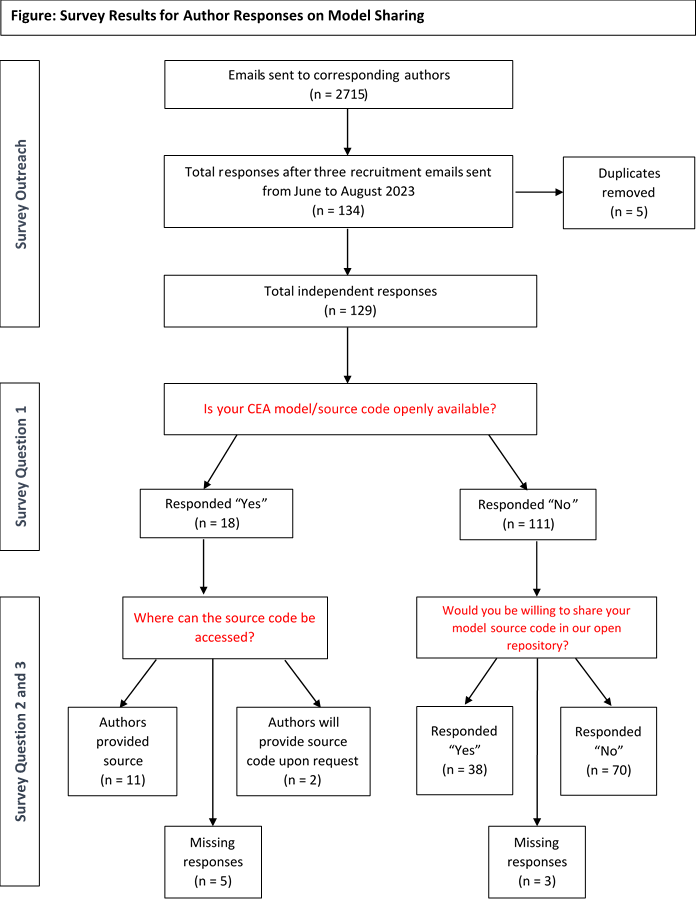Divya Patil, Abigail Riley, Patty Synnott
Date: January 18, 2024
The transparency of cost-effectiveness analysis (CEAs) models has long been a source of controversy, with ongoing debate about whether authors should be expected to publish their model “source code”. Advocates argue that sharing source code lends greater credibility to an analysis’s findings, allows others to assess the robustness of conclusions and recommendations, and facilitates the adaptation and improvement of existing models. Opponents contend that models represent intellectual property and claim there is potential for misuse.
In 2018, the Center for the Evaluation of Value and Risk in Health at Tufts Medical Center developed the Open-Source Model Clearinghouse, a searchable online repository of source code and executable models. After launching the platform, we invited 248 authors of CEAs to submit models to the Clearinghouse. Our initial outreach generated only 4 submissions, although our repository has since expanded to a total of 18 models.
To better understand current attitudes toward model sharing, and to identify additional open-source models for our Clearinghouse, we recently surveyed all corresponding authors for CEAs published between 2012 and 2022 and catalogued in the CEA Registry. We sent an initial email to 2,715 individuals on June 14, 2023, with 2 reminder emails sent through August 3, 2023. In total, 453 individuals opened the recruitment emails, and 129 completed the survey.
Of 129 respondents, 18 (14%) indicated that model source code for at least one of their CEAs was openly available. Of these 18 respondents, 11 described the online location of their source code. However, we could access the code in only two of these 11 cases.
Among respondents who said they had not made their source code publicly available (n=111), 34% expressed a willingness to contribute to our open repository. We invited these respondents to submit their models to the Clearinghouse but have yet to receive new submissions.
Given our survey’s low response rate of 5%, our results may not be representative. The modest response rate is consistent with CEA authors placing a low priority on model sharing or the possibility that there are substantial competing demands on their time and attention. Nevertheless, we believe that model sharing should remain a priority for the Health Technology Assessment field. To that end, the CEA Registry will begin tracking whether cost-effectiveness studies make their models accessible.
To browse our model repository, or to submit your own model, visit the Open-Source Model Clearinghouse.

